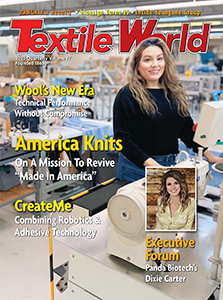I
n today’s business environment, where “doing more with less” is the order of the day and
workplace stress continues to rise, marketers might do well to add stress management to their list
of product benefits.
Marketers traditionally segment their customers into groups by demographic characteristics
such as age, gender, income, occupation and education; psychographic characteristics such as
attitudes, perceptions and beliefs; or firmographic elements such as business size, industry
classification, job title, purchase decision-maker, or those who influence the purchasing
decision.
The Stressographic Factor
In their book, “Simplicity Marketing:
End Brand Complexity, Clutter and Confusion,” Steven M. Cristol and Peter Sealey suggest adding
what they call “stressographics” to the list of segmentations to use when trying to identify your
target audience. In the business marketplace, stressographics might include job security concerns,
downsizing, the pace of technological change, production efficiency, short-term business results,
pending mergers or acquisitions, and shareholder pressure.
For example, a study by Milwaukee-based Northwestern Mutual Life Insurance Co. reports
one-fourth of employees view their jobs as the number-one stressor in their lives. Three-fourths of
employees believe workers have more on-the-job stress than a generation ago, according to a study
by Princeton Survey Research Associates, Princeton, N.J. And, problems at work are more strongly
associated with health complaints than is any other life stressor — even more so than financial
problems or family problems, according to St. Paul Fire and Marine Insurance Co., St. Paul, Minn.
Job stress has become a common and costly problem in the workplace, reducing productivity,
increasing management pressures and making people ill in many ways. Stress at work also provides a
serious risk of litigation for all employers and organizations, carrying significant liabilities
for damages, bad publicity and loss of reputation. Dealing with stress-related claims also consumes
vast amounts of management time. So, there clearly are strong economic and financial reasons for
organizations to manage and reduce stress at work.
Every customer has personal strategies for coping with and reducing stress. It’s part of the
survival instinct. By observing these strategies among your customers, whether they be formal
stress management programs or less organized techniques, you can position your products and your
brand to be an enabler rather than an obstacle in the war against job-related stress.
The Four R’s
More and more in today’s society, our
customers and we, as consumers, are making buying decisions based on dealing with or escaping
stress. Rather than adding to our customers’ stress by offering more product lines, the Simplicity
Marketing model of Cristol and Sealey suggests the four R’s of Simplicity Marketing rather than the
four P’s —Product, Price, Place and Promotion — of traditional marketing.
The four R’s — Replace, Repackage, Reposition and Replenish — are approaches that help
position your product or service as one that simplifies, and thereby reduces stress.
The first R, Replace, involves developing and positioning products as replacements for
several products, or for a more complicated product or process. “Replace may be as basic as
substituting a simpler product for a more complex one, or may focus on consolidating the number of
products or steps required by the customer to accomplish a particular task or goal,” Cristol and
Sealey write.
Consumer products companies have done a good job of implementing the Replace technique. For
example, hair care products companies introduced a conditioning shampoo that combined shampoo and
conditioner, eliminating the need and cost of buying shampoo and conditioner separately.
The next R, Repackage, bundles together a number of products or services that previously
were available only separately from multiple sources or as separate purchases from the same source.
This approach gives the customer integrated solutions from a single point of contact. Many
retailers, such as drug stores, have incorporated this approach by adding groceries and other items
to repackage themselves as “one-stop shop” brands.
Reposition is the third R, and is defined by Cristol and Sealey as positioning a brand on
the promise of simplicity, or expanding a brand’s positioning to reduce the number of brand
relationships required by the customer.
Streamlining your brand and eliminating sub-brands can declutter the landscape and thereby
reduce customer stress. You can, and should, continually improve your product or service without
introducing a new-and-improved brand or sub-brand to further confuse the marketplace.
The final R, Replenish, focuses on providing a readily available, continuous supply of
zero-defect product or service to existing customers at an acceptable price. One of the first
lessons you learn in business is that it costs more to acquire a new customer than it does to keep
an existing one, so never discount the value of existing customers and their ability to provide
referral business.
November/December 2006




